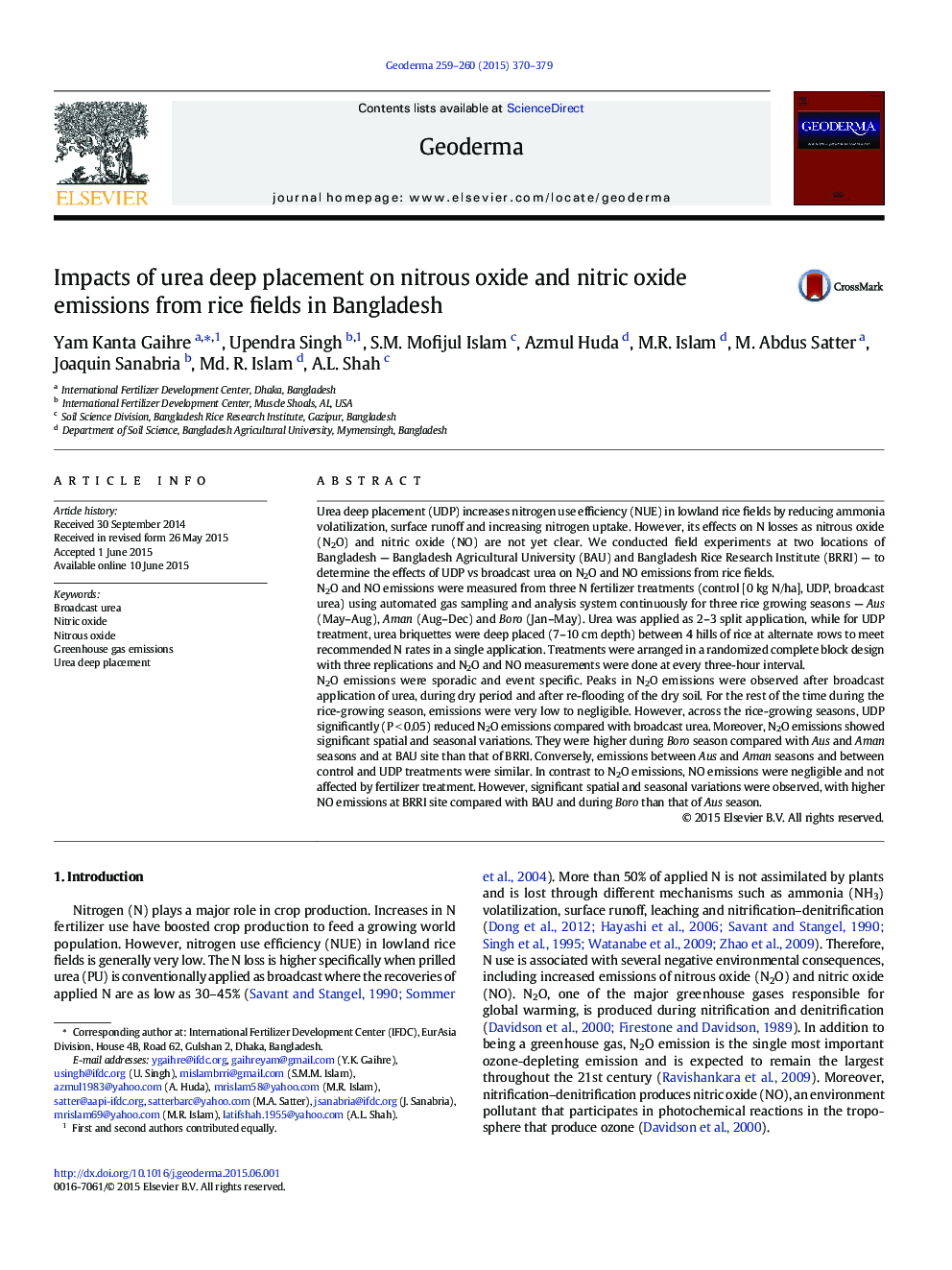| کد مقاله | کد نشریه | سال انتشار | مقاله انگلیسی | نسخه تمام متن |
|---|---|---|---|---|
| 6408546 | 1629456 | 2015 | 10 صفحه PDF | دانلود رایگان |
- First automated continuous measurement of N2O and NO emissions from triple rice cropping system in Bangladesh
- Comparison of N2O and NO emissions between urea deep placement (UDP) and broadcast urea application
- Estimation of seasonal emission factors for N2O and NO emissions
- Significant seasonal and spatial variations on N2O and NO emissions
Urea deep placement (UDP) increases nitrogen use efficiency (NUE) in lowland rice fields by reducing ammonia volatilization, surface runoff and increasing nitrogen uptake. However, its effects on N losses as nitrous oxide (N2O) and nitric oxide (NO) are not yet clear. We conducted field experiments at two locations of Bangladesh - Bangladesh Agricultural University (BAU) and Bangladesh Rice Research Institute (BRRI) - to determine the effects of UDP vs broadcast urea on N2O and NO emissions from rice fields.N2O and NO emissions were measured from three N fertilizer treatments (control [0 kg N/ha], UDP, broadcast urea) using automated gas sampling and analysis system continuously for three rice growing seasons - Aus (May-Aug), Aman (Aug-Dec) and Boro (Jan-May). Urea was applied as 2-3 split application, while for UDP treatment, urea briquettes were deep placed (7-10 cm depth) between 4 hills of rice at alternate rows to meet recommended N rates in a single application. Treatments were arranged in a randomized complete block design with three replications and N2O and NO measurements were done at every three-hour interval.N2O emissions were sporadic and event specific. Peaks in N2O emissions were observed after broadcast application of urea, during dry period and after re-flooding of the dry soil. For the rest of the time during the rice-growing season, emissions were very low to negligible. However, across the rice-growing seasons, UDP significantly (P < 0.05) reduced N2O emissions compared with broadcast urea. Moreover, N2O emissions showed significant spatial and seasonal variations. They were higher during Boro season compared with Aus and Aman seasons and at BAU site than that of BRRI. Conversely, emissions between Aus and Aman seasons and between control and UDP treatments were similar. In contrast to N2O emissions, NO emissions were negligible and not affected by fertilizer treatment. However, significant spatial and seasonal variations were observed, with higher NO emissions at BRRI site compared with BAU and during Boro than that of Aus season.
Journal: Geoderma - Volumes 259â260, December 2015, Pages 370-379
